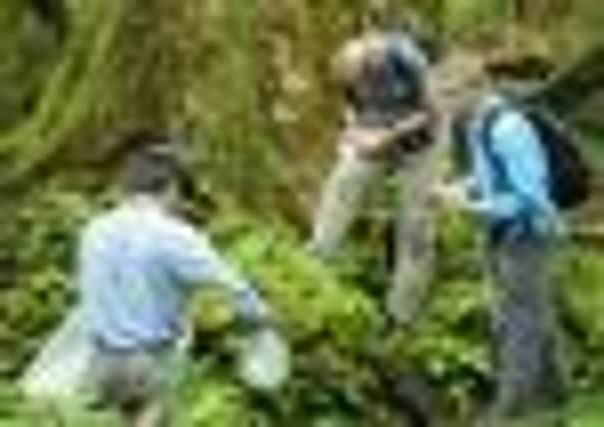Gardens: Botanists play the name game


The days of these Boys’ Own adventurers are long past, but modern-day plant collectors continue to explore the more far-flung corners of the planet, bringing home exciting new discoveries. A recent report has found that more than 50 per cent of the world’s plant species have been discovered by just two per cent of plant collectors. The Oxford University-led study, which also featured input from the Earthwatch Institute, Natural History Museum, Missouri Botanical Garden and the Royal Botanic Garden Edinburgh, also found that while their predecessors were more inclined to collect in the interests of horticultural diversity, today’s adventurers are at the vanguard of international conservation.
Over the last five years at Edinburgh’s Botanic Garden, an average of one new species has been identified per week. David Harris and David Middleton are two people making significant contributions to the discovery of plant species. So how does one end up working as a plant hunter? In Middleton’s case, a PhD at Aberdeen University studying the taxonomy of plants in the rhododendron family involved collecting work in the high Andes of Ecuador. It fired his enthusiasm and he’s since gone on to work around the world, plant collecting in Thailand, Cambodia, Laos, Malaysia and the Philippines and is now editor of the Edinburgh Journal of Botany.
Advertisement
Hide AdAdvertisement
Hide Ad“It’s important to point out that the Victorian explorers had very much a European bias and focus,” says Middleton. “It’s not like that any more. We work together with people from the countries we visit. We do it out of scientific curiosity and a sense of discovery and they do it for the same reasons.”
David Harris’s parents were both botanists and after studying at Edinburgh University in the 1980s he travelled to the Central African Republic as a volunteer botanist on a project studying gorillas. It’s a part of the world he’s returned to many times and during his PhD on African trees he did field work collecting plants and interviewing people in Ivory Coast, Nigeria, Cameroon, Gabon, both Congos and the Central African Republic. Today he is herbarium curator at the Botanics and as such is responsible for a staggering three million plant specimens. “When we collect plants, we dry them and press them and they go into the collection,” he explains. “The information from the herbarium is constantly being updated and we have visits from scientists from overseas to help with this work.” He points out that species identification is fundamental to understanding biodiversity, saying “only when a new species has been named can we start to assess whether or not it is endangered and its importance to the wider environment”.
David Middleton explains that both he and Harris do general collecting and so will deposit plant specimens at the herbarium, but it might be some time before a specialist works their way through the cupboards, comes across that specimen and goes through the process of describing and naming it. “We estimate that there are about 70,000 flowering plants not yet named and we think that half of these have already been collected and are in the herbarium,” says Harris.
Middleton tells how he came across an old specimen from Thailand in the herbarium many years ago. It looked like something that hadn’t been described but the locality information was good so on his next trip to Thailand he was able to visit the area where it had been collected. “I didn’t find it,” he says. “I went back a second time but had no success then on my third visit I took a different path through the mountain and found myself in a grove full of these trees with beautiful white flowers.
“I collected a sample and took it back to Bangkok and the local scientists organised a trip themselves to see the trees. My Thai colleagues persuaded us to name it after the queen of Thailand, Queen Sirikit, and so the tree was named Wrightia sirikitiae.”
It’s obvious that the field trips and lab work are both essential parts of a plant collector’s job. “It does make the job more exciting, getting out into the field,” says Middleton, “and you can’t do our work if you don’t see plants in their field. There are some dangers – working in Thailand I often have to be careful of elephants at night if we’re camping.” What comes across more strongly than any dangers are the benefits of working in partnerships with local people. “Such a large part of our work is building good relations with local botanists,” says Middleton. “They do lots of background work and know about unusual and exciting places to go, which if we didn’t have these contacts we might not hear about.”
For the plant collectors it’s not just about finding new plants, it’s also about enriching our knowledge and trying to find out as much as possible about plants and their uses so this information can be used for conservation. “The world is a fascinating place and humanity has always been both curious about and had the desire to investigate and understand the environment in which we live,” says Middleton. “We have also altered or destroyed much of the natural world around us before we have had a chance to know what is there or what effect the loss of these plants and animals will have on our planet and on us. To truly conserve what remains we have to know what the baseline of species diversity is; to do that we have to go out and explore parts of the world where we still know too little.”
• Royal Botanic Garden Edinburgh (www.rbge.org.uk)